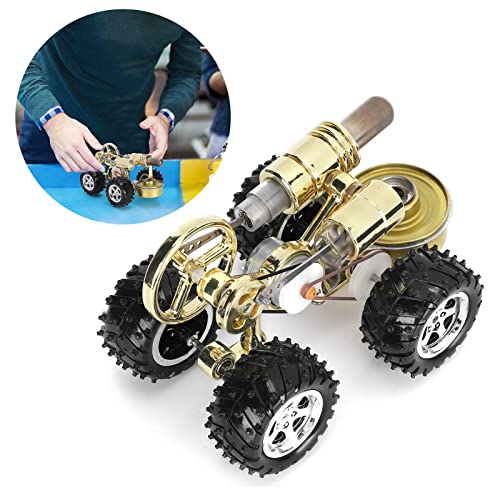- Joined
- Aug 16, 2013
- Messages
- 1,080
- Reaction score
- 837
Christmas and New years have past so I’m back to tuning/cleaning up my mini mill. I saw in the Princess Auto flyer (the Canadian version of Harbor Freight) they had white lithium grease on sale. Any time I go to Princess Auto I take a wander through the surplus section. Most times it’s like going to the dollar store but I have found some good stuff, brand name tools, heat shrink, zip ties and once Mitsubishi NEMA17 and NEMA24 stepper motors.
I’d seen these worm shaft motors in surplus for a while but with no nut, an unknown voltage and the absence of any other spec I wasn’t interested. But I’d been thinking of adding a power feed on the X axis so I looked up the part number on the internet and low and behold.
P/N: 5503740 D
Power Seat Tilt Motor for a Chevrolet Malibu
RPM: 190 RPM @ 12 Volt DC
1.5A No Load /17A Stall @ 12V.

I figured if it had got enough power to lift my 210lb butt in a car it should work as a power feed and the 190 RPM seems about right so I dropped the $9 Canadian and took one home. Messing around on the bench I couldn’t stall it with my hand at 5V so it’s got some torque and at 12V no way was I going to stop it.
So this is my rough plan. The frame will be 1/4” aluminum where I need rigidity and 3D printed where it just needs to keep the chips out. A few years ago when I first got into casting I was lucky enough to be gifted a lot of aluminum scrap from a local fabrication shop and a lot of it was 1/4” plate so I think I’ll mock up the frame just to get a better feel of how things are going to fit.

The motors are sold as right hand and that would put the motor above the bed. I don’t think I have ever had anything on this little mill sticking out to where this could become an issue but I don’t like the idea. It turns out that you can just undo the 4 screws and swap it around making it left hand and that will put the motor down below the bed.



I’d seen these worm shaft motors in surplus for a while but with no nut, an unknown voltage and the absence of any other spec I wasn’t interested. But I’d been thinking of adding a power feed on the X axis so I looked up the part number on the internet and low and behold.
P/N: 5503740 D
Power Seat Tilt Motor for a Chevrolet Malibu
RPM: 190 RPM @ 12 Volt DC
1.5A No Load /17A Stall @ 12V.

I figured if it had got enough power to lift my 210lb butt in a car it should work as a power feed and the 190 RPM seems about right so I dropped the $9 Canadian and took one home. Messing around on the bench I couldn’t stall it with my hand at 5V so it’s got some torque and at 12V no way was I going to stop it.
So this is my rough plan. The frame will be 1/4” aluminum where I need rigidity and 3D printed where it just needs to keep the chips out. A few years ago when I first got into casting I was lucky enough to be gifted a lot of aluminum scrap from a local fabrication shop and a lot of it was 1/4” plate so I think I’ll mock up the frame just to get a better feel of how things are going to fit.

The motors are sold as right hand and that would put the motor above the bed. I don’t think I have ever had anything on this little mill sticking out to where this could become an issue but I don’t like the idea. It turns out that you can just undo the 4 screws and swap it around making it left hand and that will put the motor down below the bed.













![MeshMagic 3D Free 3D Modeling Software [Download]](https://m.media-amazon.com/images/I/B1U+p8ewjGS._SL500_.png)






















































![DreamPlan Home Design and Landscaping Software Free for Windows [PC Download]](https://m.media-amazon.com/images/I/51kvZH2dVLL._SL500_.jpg)
























